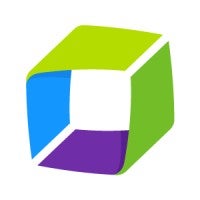Occasionally, network performance issues require more than just a quick restart of the router to resolve. In such instances, being able to understand the root of the problem helps in selecting the best solution. In an enterprise setting, IT teams need to ensure that network speed and quality are distributed and managed between various users and applications. Running network tests helps these teams pinpoint and solve network problems.
Table of Contents
What is a Network Testing Tool?
A network testing tool refers to software that measures various aspects of a network. It could be a Simple Network Management Protocol (SNMP) ping tool or a ping monitoring tool, among many others. These tools assist network admins to swiftly make informed network troubleshooting decisions and ensure reduced latency and consistently high performance.
Also read: The Impact of Networking Evolutions
Comparison of Network Testing Tools
As unique as each is, the six network testing tools below share features like performance testing, alerting capability, and data visualization. Here’s how they differ from each other.
| Tool | Automation | Comprehensive Monitoring | Multi-Network Capability | Path Analysis | Real-Time Monitoring |
| Dynatrace | ✅ | ✅ | ✅ | ❌ | ✅ |
| Datadog | ✅ | ✅ | ✅ | ✅ | ✅ |
| SolarWinds NPM | ✅ | ❌ | ✅ | ✅ | ❌ |
| SolarWinds ETS (Wan Killer) | ✅ | ❌ | ❌ | ❌ | ✅ |
| PRTG Network Monitor | ✅ | ❌ | ✅ | ✅ | ✅ |
| PingPlotter | ❌ | ❌ | ✅ | ❌ | ✅ |
Dynatrace

Dynatrace is an all-in-one market-leading network monitoring tool that accurately reports on the performance of user experience, applications, servers, and networks. It leverages automated and intelligent observability at scale to efficiently monitor modern digital ecosystems. For networks, Dynatrace tracks process-specific network performance metrics, such as requests and retransmissions, to proactively diagnose network issues.
Key Differentiators
- AI-powered. Dynatrace leverages a deterministic artificial intelligence engine to provide users with not just data and alerts, but real-time insights, options, and actionable answers.
- High-quality process communications over networks. Dynatrace discloses the performance and quality of network connections in a user’s environment to uncover which services and processes suffer from network issues. This allows DevOps teams to optimize the performance of affected network connections.
- Comprehensive overview of virtualized network infrastructure. With an overview of the network infrastructure, users can understand the topology of their networks in dynamic environments. This allows users to always be aware of and understand the status of their networks.
- Integrated network health monitoring. Dynatrace shows users’ data throughput between communicating hosts and processes to better display the key metrics in a single view. The quality of network connections is displayed.
Con:
- Compared to similar tools, Dynatrace is more costly.
Datadog

Datadog is a monitoring, security, and analytics solution for technical teams and business users that provides unified real-time observability of the entire technology stack of its users. Organizations of all sizes can use Datadog to empower their digital transformation and cloud migration, secure and understand their infrastructure, and drive collaboration. Datadog’s Network Performance Monitoring (NPM) simplifies the monitoring of complex networks and gives users visibility into their network traffic.
Key Differentiators
- Live network mapping. Live network mapping and analysis offer users insight into teams and services that are responsible for irregular traffic spikes. It analyses traffic through applications, containers, and on-premise servers as well as troubleshooting inefficient load balancing.
- App-layer insight. Analysis of traffic in between important endpoints helps users go beyond just measuring endpoints between IP layers. The crucial network metrics involved include latency, connection churn and TCP retransmits.
- DNS performance. Analysis of DNS performance throughout the system can be achieved without having to SSH (Secure Shell) into each machine in a network. The health of a DNS server is assessed through metrics like response time, request volume, and error code.
Cons:
- Datadog may be complex to set up. Less technical users and first-time users may experience a learning curve.
- The pricing model may be unattractive compared to alternatives.
SolarWinds Network Performance Monitor

SolarWinds Network Performance Monitor (NPM) is an affordable and easy-to-use tool that speedily detects, diagnoses, and fixes network performance issues, to reduce network outages. It has a Quality of Experience dashboard that contains latency testing facilities that display network latency and network response times.
Key Differentiators
- Network Analysis Tool. The network analysis tool empowers users to quickly analyze faults, optimize network performance, and reduce downtime. Through effective root cause analysis, it also saves users’ time that would have been spent in sifting through event logs.
- Network latency test tools. These tools allow users to analyze network performance by measuring and reducing network latency. They analyze network response time and identify performance problem sources.
- Network performance testing features. SolarWinds NPM performance testing features give users actionable insights to reduce network downtime. The intelligent network alerting feature alerts users the moment key performance metrics exceed predefined thresholds.
Con:
- Configuring thresholds for the intelligent network alerting feature may be burdensome.
SolarWinds Engineer’s Toolset (WAN Killer Tool)

SolarWinds’ Engineering Toolset (ETS) offers more than 60 network management tools for users to monitor and troubleshoot networks. With Engineer’s Toolset, users receive real-time alerts about network availability and network health. ETS carries out network diagnostics, allowing for quicker troubleshooting and handling of compound network issues. In particular, ETS has the SolarWinds Ping Sweep and SolarWinds Traceroute tools for network performance and latency tests.
Key Differentiators
- WAN Killer network traffic generator. SolarWinds WAN Killer helps users carry out custom usage tests to be aware of how to adjust their network load based on their needs.
- Network stress testing. The network stress tests of the WAN Killer tool give users realistic insight into how devices would perform in the event of traffic spikes to allow them to proactively strengthen their networks.
- Simple and advanced ping monitor. SolarWinds ETS ping monitor helps users to continuously diagnose network issues. It has a ‘simple’ ping tool that sends packets to an IP address then measures the response time and packet loss. It has an Enhanced Ping tool to identify and visualize response-time problems.
Cons:
- SolarWinds ETS user interface feels dated.
- Beginners may find it difficult to understand the tool.
PRTG Network Monitor

Paessler PRTG is a comprehensive real-time network infrastructure monitoring tool that helps IT teams identify and resolve problems across their networks before they intensify and negatively impact their organizations. It deals with servers, applications, and networks. PRTG uses utilities called sensors to monitor either a service, hardware, or the condition of a system.
Key Differentiators
- Auto Discovery. PRTG offers its automated discovery feature during installation to automatically create sensors within a user’s IP range. It also not only details bottlenecks but also gives the user insights to resolve network latency issues.
- Preconfigured sensors. The hundreds of preconfigured sensors provided by PRTG make it fast and simple for users to get started with their network monitoring. Furthermore, it offers tens of sensor templates, which support many popular devices and applications.
- Cluster failover solution. PRTG Network Monitor ensures users do not have to worry about failovers by allowing failover tolerant monitoring. Through automatic failover handling, a different node takes the responsibilities of the master of a primary cluster in the event of failure or disconnection.
Con:
- PRTG is extremely detailed. A lot of man-hours may be required to exhaust its features as well as customize the system to your liking.
PingPlotter

PingPlotter is a network monitoring tool that graphs the results of testing the route between a website and a user’s computer to identify the source of network issues. Through graphing, it provides visual evidence, thus helping diagnose problems faster. With a range from simple to complex depending on user preferences, PingPlotter’s network performance analysis collects latency and packet loss data until a user captures the information they need.
Key Differentiators
- Foundational metrics. PingPlotter provides users with the tools to track foundational metrics across devices running Windows, Linux, or macOS operating systems.
- PingPlotter Insights. PingPlotter Insights allows users to instantly breeze through a few days’ worth of data to reveal and diagnose issues. Insights analyses data to direct users to the correct decisions while avoiding false positives.
- Data privacy. PingPlotter tests only the network connection to ensure the privacy of users is upheld. No user data or network data is subject to spoofing.
- Live data sharing. Through a simple URL, users can share live results and collaborate through diagnosing issues.
- Network visibility. PingPlotter displays end-to-end network conditions to users to show them the origins of sub-par performance, disconnects, and serious network outages.
Cons:
- The free trial is only two weeks.
- The free version excludes TCP and UDP ping tests.
Choosing the Best Network Testing Tool
Knowing that there are dozens of high-quality tools in the market, in addition to the six tools covered above, may not ease your decision-making. However, there are a number of factors that are guaranteed to help you narrow down your search. For instance, the pricing model. Do the free plans of various performance testing tools satisfy your needs? Or would it be better to pay for a premium plan? Do you have a budget? How are alternative tools priced? What is the size of your team, and how does that impact your budget? How technical is your team? Do the features meet your test requirements? Are the features going to simplify your tests or are they going to overwhelm you? How easy is it to use the tool? How secure is the tool? Answering these questions will ensure that you are satisfied with your network testing tool of choice.
Read next: Enterprise Networking Trends: Evolution & Innovation



